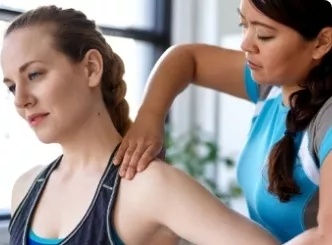
Dizziness and Balance
Do you sometimes feel dizzy, unsteady, or get a spinning sensation? We can help. No matter what your age or how long you’ve been suffering, we’ll work with you to minimize or eliminate your symptoms and get you back to a better life.
Vestibular rehabilitation is a proven treatment for dizziness and balance problems and is highly effective for all age groups.
The vestibular system includes the parts of your inner ear that sense your head position and movement, the nerve pathways that carry that information to your brain, and the parts of the brain that process it.
The brain uses inputs from the vestibular system, visual system and your muscles and joints to maintain your balance, orientation, and the ability to see clearly when you move.




